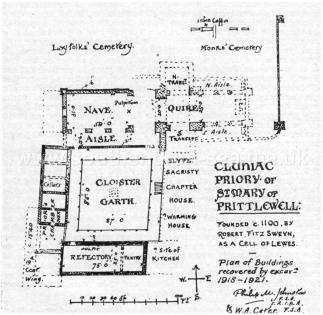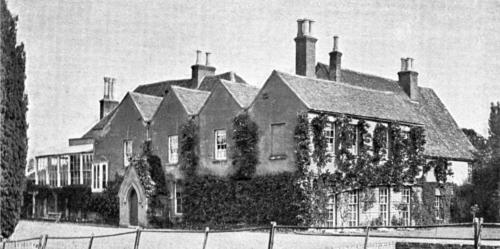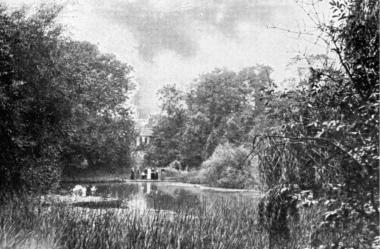Foundation of Prittlewell Priory
Early
in
the
Twelfth
Century
the
monks
of
the
Cluniac
order
were
endowed
with
Prittlewell
manor
and
other
lands
by
Robert
Sweyn,
a
son
of
the
previous
landowner,
for
the
purpose
of
founding
a
monastery,
a
subordinate
institution
of
the
great
house
at
Lewes.
The
Cluniacs
sprang
from
the
Benedictines,
taking
their
name
from
Cluny,
in
Burgundy.
The
brethren
celebrated
service
with
much
liturgical
splendour
and
were
subject
to
serve
regulations
respecting
the
observance
of
fasting
and
silence.
Robert
Sweyn’s
endowment
was
stated,
in
a
deed
produced
in
the
reign
of
Henry
IV,
to
have
been
granted
“for
the
salvation
of
my
soul
and
of
my
wife
and
my
father
and
mother,
and
of
Beatrice,
my
grandmother,
and
of
all
those
whose
care
it
may
be
to
maintain
and
increase
that
place.”
As
a
token
of
subordination
to
Lewes,
it
was
ordained
that
the
Prittlewell
monastery
should
pay
one
mark
of
silver
annually
thereto
on
the
feast
of
St
Pancras.
It
rapidly
increased
in
wealth
for
some
years
and
was,
for
so
small
a
foundation,
unusually
rich
in
ownership
of
church
livings.
The
Number
of
monks
who
should
have
been
in
residence
was
fourteen,
but
from
various
causes,
possibly
the
exactions
of
the
monarchy,
the
monastery
at
times
was
reduced
to
direst
straight,
and
the
number
of
monks
very
greatly
diminished.
Of
the
building
situated
on
a
gentle
elevation
on
the
north
side
of
Prittle
Brook,
only
the
Rectory
and
the
Priors
Chamber
remain;
a
country
mansion
having
been
erected
upon
this
site
when
it
was
passed
into
private
ownership.
Part
of
the
building
was
incorporated
therewith.
The
inventory
prepared
at
the
order
of
Henry
VIII
was
long
the
only
evidence
possessed
of
its
extent,
but
restoration
of
the
building
has
led
to
interesting
discoveries
in
this
connection.
The
priory
comprised
of
six
bedchambers,
with
hall,
pantry
kitchen,
butler’s
and
porter’s
rooms,
with
a
small
chapel
and
prior’s
room.
There
was
also
a
church
with
a
choir
(in
which
there
were
altars
to
St
John
and
St
Thomas),
lady
chapel,
rood
chapel
and
a
vestry,
with
a
burying
place
near,
in
which
several
skeletons
have
been
unearthed.
Milton
manor
being
in
the
ownership
of
Holy
Trinity,
Canterbury,
the
infant
monastery
attracted
the
patronage of the celebrated Thomas
à Becket, and he was described as “a great favourer thereof.”


Southend Timeline Southend-on-Sea © 2009 - 2024. All Rights Reserved

Southend-on-Sea



Early 1900s The Priory
Early 1900s The Lake

Website Info:

Southend-on-Sea’s No 1 History Website! Documenting The Town & The Townspeople
Now Incorporating The Sea Of Change Website


SOUTHEND CITY
Chalkwell ▪ Eastwood ▪ Leigh-on-Sea ▪ Prittlewell ▪ Shoeburyness ▪ Southchurch ▪ Thorpe Bay ▪ Westcliff-on-Sea
































































